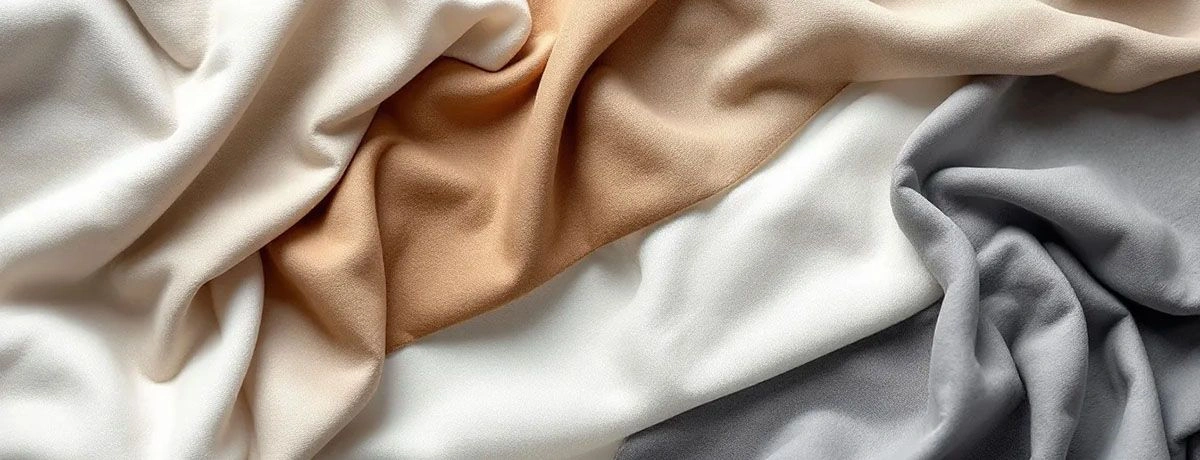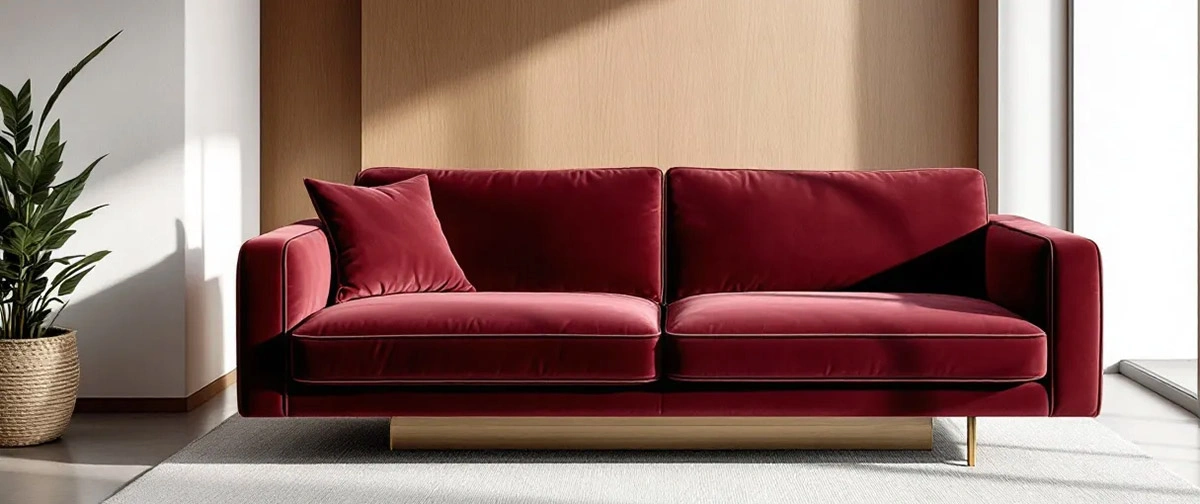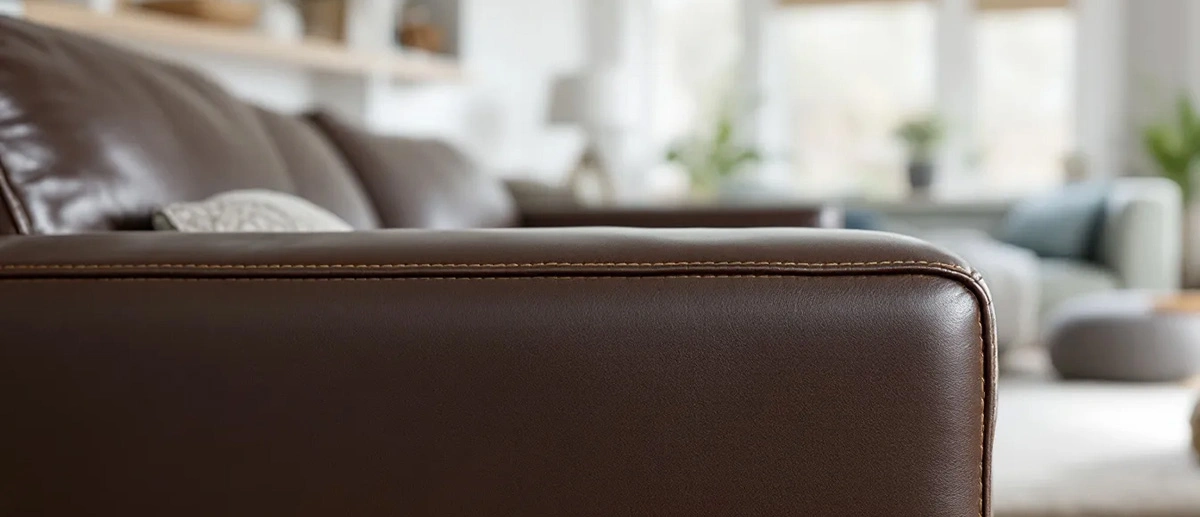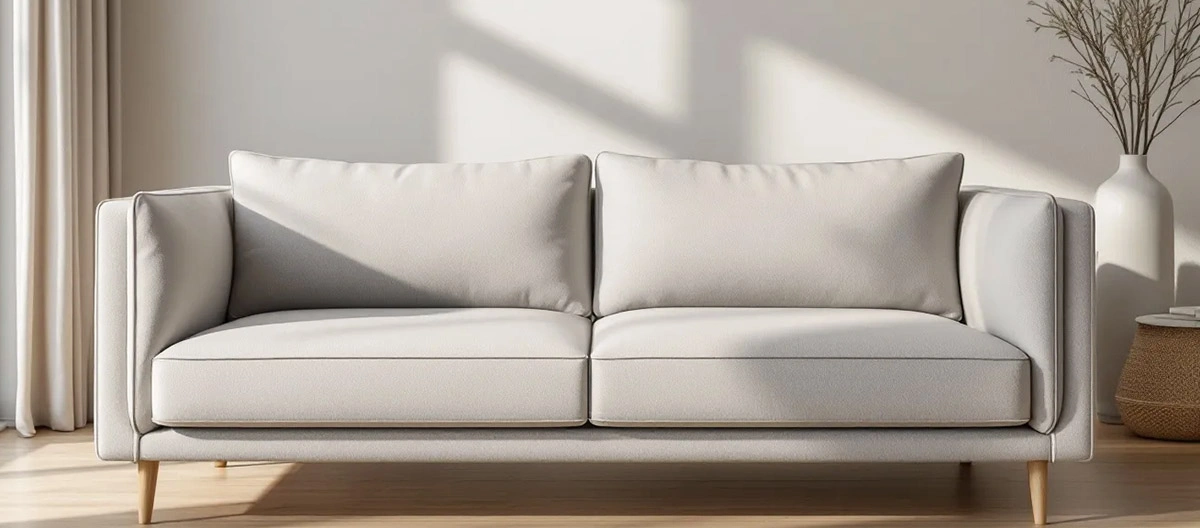Which Fabric Is Best for Sofa? Top Choices for Comfort and Durability

Choosing which fabric is best for sofa means considering comfort, durability, and your specific needs. In this article, we will explore various fabric options, weighing their pros and cons to help you make the right choice for your home.
Key Takeaways
-
Understanding the balance between aesthetic appeal and functionality is key when selecting sofa fabrics.
-
Cotton, leather, and microfiber are top fabric choices for their durability, comfort, and ease of maintenance.
-
Lifestyle factors, such as the presence of pets or children, should significantly influence fabric selection to ensure longevity.
Understanding Sofa Fabrics
Selecting the right sofa fabric is vital for comfort and practicality. A couch serves as a place to relax, entertain, and spend much of our time. Evaluating various fabrics, considering their benefits and potential drawbacks like stain resistance and durability, is important.
When selecting fabric for a sofa, consider both aesthetic and practical requirements. For instance, cotton upholstery is versatile enough to suit both formal and informal settings, making it a great choice for different lifestyles. Leather offers a high-end look that can enhance a room’s aesthetic while providing durability suitable for high-traffic areas.
Balancing personal style with the fabric’s functionality is key.
Cotton: A Versatile Natural Fiber
Cotton is a popular sofa fabric and couch fabric because it is the best fabric:
-
breathable
-
durable
-
soft
-
cozy
-
easy to clean
Its natural fibers offer better breathability and comfort than synthetic fibers and other fibers. Cotton fabrics made from natural material come in a wide range of colors and patterns, allowing for personalized decor.
Cotton offers several advantages for interior design and furniture:
-
A diverse range of patterns and colors designed to seamlessly complement any interior décor.
-
Ideal for warm climates due to its breathability, ensuring comfort even on hot days.
-
Versatile and naturally comfortable, making it a top choice for sofas.
Linen: Casual Elegance
Linen is made from flax fibers, contributing to its unique texture and durability. It provides a chic, casual look that appears casually rumpled, adding a touch of effortless elegance to any room. Performance linen holds shape well while being soft, making it a great choice for slipcovers that can withstand everyday life.
Linen softens over time, enhancing its casual elegance. Ideal for those who appreciate a relaxed yet stylish aesthetic, its unique properties and visual appeal make linen a perfect choice for both formal and informal settings.
Velvet: Luxurious Feel and Plush Comfort

Velvet is known for several qualities:
-
It is sumptuous and silky, featuring rich colors and depth that can transform any living space.
-
Its luxurious feel provides plush comfort.
-
Velvet’s insulating properties help maintain comfortable temperatures, making it versatile for different climates.
Velvet is also hypoallergenic, preventing dust and allergens from accumulating. Available in sophisticated jewel tones and relaxed earth tones, velvets offer flexibility in design choices.
However, velvet is best suited for formal spaces or low-traffic areas due to its delicate nature and tendency to wear in high-traffic zones.
Chenille: Soft and Textured
Chenille is recognized for:
-
Its unique woven texture that creates a soft, fuzzy surface
-
Contributing to both comfort and visual appeal in upholstery
-
Having a plush feel texture that makes it a comfortable choice for sofas
-
Feeling softer and being more durable than velvet
Performance chenille offers stain resistance and durability for high-traffic areas. However, cat owners should note that nylon chenille can stain easily when snagged by claws, affecting its longevity and staining potential.
Despite this, chenille fabric is easy to clean, which is a significant advantage for maintaining its appearance.
Microfiber: Stain-Resistant and Durable
Microfiber chenille combines softness with durability, making it suitable for high-traffic areas. Its features include:
-
A tightly woven structure that provides strong resistance against stains and moisture
-
The ability to easily wipe away spills
-
Practicality for families due to its soft feel and ease of maintenance
Microfiber holds up over time, requiring less frequent replacement than other fabrics. However, it attracts dust and hair, which can be problematic for pet owners.
On the bright side, microfiber can be beneficial for allergy sufferers as it does not attract dust and is lint-free.
Leather: Timeless and Durable

Leather is a sophisticated, durable material with several notable qualities:
-
Resists allergens and softens with use, making it a luxurious choice.
-
Its durability and stain resistance make it suitable for high-traffic areas, maintaining its appearance over time.
-
Requires regular conditioning to prevent cracking.
-
Needs simple cleaning methods like dusting or wiping with a damp cloth.
Leather stands out for its combination of luxury, comfort, and practicality. A leather sofa can elevate any room’s aesthetic, making it a timeless and durable investment.
Polyester: Affordable and Resilient

Polyester has the following characteristics:
-
Highly durable
-
Stain-resistant
-
Affordable, making it ideal for high-traffic areas
-
Available in a wide variety of colors, offering flexible interior design options
However, polyester is not breathable, which can make it uncomfortable in warmer climates.
Polyester fabrics are resistant to wrinkling, crushing, and fading, contributing to their overall durability. This synthetic fabric offers a practical and affordable solution for those looking to furnish their living room without breaking the bank.
Wool: Warm and Resilient
Wool has several beneficial properties:
-
Durable
-
Naturally stain-resistant
-
Wrinkle-free
-
Soft, providing a comfortable seating experience and enhancing the sofa’s coziness
-
Known for its warmth, making it perfect for colder climates.
Wool upholstery does not require frequent replacement like synthetic options, providing longevity. Its resilience and durability make it suitable for high-traffic areas, ensuring your durable sofa remains in great condition for years.
Silk: Elegant but Delicate
Silk is known for its luxurious appearance, providing an upscale feel to furniture. It can resist wrinkling, making it suitable for maintaining a polished look in upholstery. Due to its delicate nature, silk is best used in low-traffic areas to preserve its condition.
While luxurious, silk can easily be damaged and is difficult to clean, making it impractical for family use. However, in formal rooms, silk adds unmatched elegance and sophistication.
Vegan Leather: Ethical and Stylish
Vegan leather, often made from polyurethane, is durable and mimics the look of genuine leather while being more affordable. This synthetic fabric offers a stylish and ethical alternative to real leather, appealing to those who prioritize sustainability and animal welfare.
Unlike genuine leather, vegan leather and faux leather do not develop a natural patina over time, which may be a consideration for some buyers. However, its affordability and ethical appeal make it popular in many modern homes.
Other Fabrics: What to Avoid
When choosing fabrics for households with pets, consider the following:
-
High-pile fabrics tend to trap pet hair and can be difficult to clean, making them less practical for regular use.
-
Fabrics with low rub counts are likely to deteriorate faster, so it’s wise to avoid them for long-lasting upholstery.
-
Fabrics with loose weaves, like linen and tweed, can easily snag from claws, making them unsuitable for households with pets.
Certain fabrics are not recommended for everyday use due to their maintenance requirements or lack of durability, which can lead to wear and tear. Being mindful of these factors and providing proper care can help avoid potential pitfalls when selecting your sofa fabric.
How to Choose the Perfect Fabric
Lifestyle considerations, including the presence of pets or children, should guide fabric choice to ensure longevity and ease of maintenance. Choosing the right upholstery fabric influences both the lifespan of the sofa and its aesthetic appeal.
Leather, though more expensive, often proves to be a long-term investment due to its durability and longevity. A fabric’s durability can be gauged by its double rub count; higher counts indicate the best material quality and longer-lasting materials, providing more durability.
Opting for neutral fabric colors makes it easier to update the room’s look with accessories, rather than changing the entire sofa when trends shift.
Summary
Choosing the right sofa fabric is a blend of personal style, practical needs, and long-term investment. From the versatility of cotton and the casual elegance of linen, to the luxurious feel of velvet and the timeless durability of leather, each fabric brings unique benefits to your living space. Understanding the properties of each fabric can help you make an informed decision that suits your lifestyle and aesthetic preferences.
Ultimately, the perfect fabric for your sofa depends on your specific needs and tastes. By considering factors such as durability, maintenance, and comfort, you can ensure that your new sofa not only looks great but also stands the test of time. Remember, a well-chosen fabric can enhance your living room and provide lasting comfort for years to come.
Frequently Asked Questions
What is the most durable sofa fabric?
Leather and microfiber are the most durable sofa fabrics, making them ideal for high-traffic areas and households with children or pets. Their resilience ensures they withstand daily wear and tear effectively.
Which sofa fabric is easiest to clean?
Microfiber and leather are the easiest sofa fabrics to clean, thanks to their stain-resistant properties and low maintenance requirements. Consider these materials for hassle-free upkeep in your living space.
What fabric is best for a sofa in a warm climate?
Cotton and linen are ideal fabrics for a sofa in a warm climate, as they offer breathability and comfort. Choosing these materials will help keep your space cool and inviting.
Is vegan leather a good alternative to genuine leather?
Vegan leather is a good alternative to genuine leather due to its durability, affordability, and ethical considerations. However, it won't develop the natural patina that genuine leather does over time.
What fabrics should be avoided for sofas?
Avoid high-pile fabrics, low rub count materials, and loose-weave textiles like linen and tweed for sofas, as they can trap pet hair, snag easily, and wear out quickly. Opt for more durable fabrics to ensure longevity and ease of maintenance.
Contact MH
MH offers sofa fabrics. Please contact us for more details or inquiries. We're here to help!


